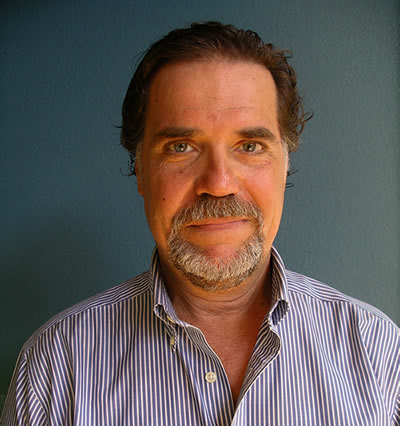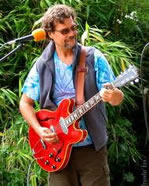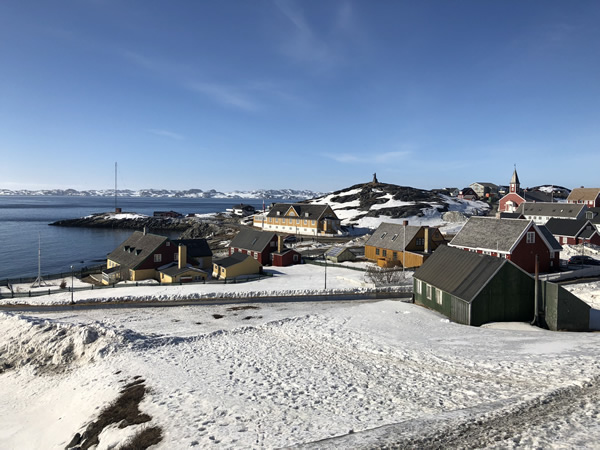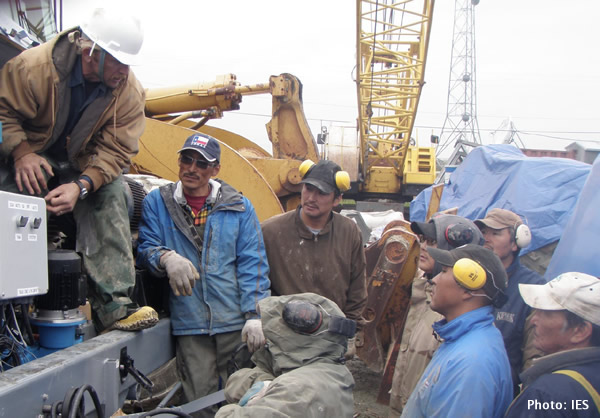Navigant Research has just published a new report, Microgrid Innovation in the Circumpolar Arctic, that highlights the energy leadership underway in remote northern regions. Report author and Navigant research director Peter Asmus says microgrids compensate for high fuel costs and lack of electric power infrastructure, providing reasonably priced, increasingly sustainable power to over 1.5 million people in Alaska, Greenland, the Canadian Arctic and part of the Russian Arctic. We’re honored to share his perspectives here:

HOMER Energy (HE): What patterns do you see emerging in remote microgrid markets today? How do they differ from grid-connected markets?
Peter Asmus (PA): Growth among remote microgrids—the largest of any microgrid segment, representing 43% of the total identified market—has remained a significant proportion of the microgrid market since 2010.
One trend bringing the remote microgrid into commercial viability is the emergence of energy-as-a-service (EaaS) business models such as pay-as-you-go/pay-as-you-grow. This is especially the case for energy access projects in Africa and countries such as India. The mobile phone has been key to allowing customers to pay for the energy services these microgrids provide. While EaaS is also gaining ground in grid-connected markets, it is fueling remote microgrids. Over 80% of all microgrid projects rely on some form of EaaS. Microgrids in some markets, such as Alaska and the circumpolar Arctic, rely on more traditional forms of financing.

HE: What factors are inspiring these trends?
PA: Alaska uses more primary energy on a per capita basis than any other state in the country. This high usage is due in part to the cold climate coupled with a high prevalence of energy intensive extractive industries that make up the backbone of its economy, particularly crude oil extraction and export. These factors make many locally available renewable resources cost-competitive in Alaska.
HE: Are remote and off-grid microgrids like those in Alaska and the Arctic helping propel industry change?
PA: The degree to which Alaska has invested in renewable energy and the ubiquitous nature of market adoption, particularly for these remote microgrids, offers important lessons for the developing world. Given the reliance on diesel electric generation and high associated costs that can exceed $1/kWh in some communities, there are strong economic incentives to integrate renewable energy. Renewable energy is further incentivized by a highly deregulated utility market with dozens of utilities, state investment in infrastructure in the past, and modest subsidies that create niche markets where renewable energy projects are cost-competitive. Alaska’s small and relatively constant population also translates into a market focused on serving existing customers.

Innovation has been incremental but steady, moving from basic isolated diesel systems to incorporating distributed energy resources at increasing levels fueled by a continuous improvement ethos that leans toward a greater and greater uptake of renewable energy resources.
Perhaps one of the most interesting insights gleaned from Alaska’s leadership on remote microgrids is the role of utilities. Most microgrids in Alaska are operated by local utilities, with over 100 certificated utilities active in the state. The non-integrated nature of Alaska’s electric infrastructure permits this large number of certificated utilities to serve such a small overall population. Cooperative utilities are the predominant model in Alaska. While utilities in the continental US face opposition to rate-basing of microgrids, utilities in Alaska have no choice. Microgrids are often the only viable solution for delivery of energy services.
HE: How have they tested the limits of technology? What have they proven in terms of resiliency and economic feasibility?
PA: Some of Alaska’s utilities have a local footprint limited to a single community and have limited operational capacity. Therefore, technology choices must be appropriate or local operators will circumvent technology that is beyond their skillset and installed systems and projects will fail. This is an important lesson for private sector vendors making decisions about controls, batteries, and other key microgrid enabling technologies. Microgrids in rugged environments, whether cold or hot, need to rely on technologies well-matched not only to local environments, but also to purpose and to local labor force capabilities. One doesn’t need a sophisticated controller capable of interacting with wholesale markets to provide grid services when there is no wholesale market, since these systems are limited to a distribution network.

Alaska is not alone when it comes to microgrid innovation in the far north. Vast portions of the circumpolar Arctic have remote areas with low population density, minimal or no transmission infrastructure, and limited or seasonal accessibility. They also have high local energy demand driven by an environment where cold and darkness reign over a significant part of the year. The need for creative solutions to provide reliable access to energy services and reduce operational costs has risen independently in many locations.
Incorporating renewable energy in some of the harshest and most remote areas on Earth has tested the limits of technology. Renewable energy has supported the fundamental infrastructure necessary for economic growth and the ability for towns to provide basic services such as public safety and health, lighting, and—most important of all—heat. What these microgrids have proven is that microgrids that incorporate renewable energy are more resilient than systems that just rely on fossil fuels, feature lower operation and maintenance costs, and help address the threat of global climate change.
At the same time, these microgrids show the greatest diversity of renewable energy, including multiple forms of hydroelectricity, including emerging modular hydrokinetic technologies, biomass, and even geothermal. The remote microgrid space has pushed the envelope on incorporation of diversity into a more resilient and cost-effective power supply.
We’re pleased to welcome Peter Asmus who is research director at Navigant, as a keynote speaker at this year’s seventh annual HOMER International Microgrid Conference, taking place October 7-9 in Cambridge, Massachusetts. He’ll be providing an overview of Global Microgrid Markets. Also don’t miss our special session on Arctic microgrids:
Case Studies: Lessons from 0ver 20 Years of Microgrid Development in the Arctic
Gwen Holdmann, Alaska Center for Energy and Power, Microgrid Innovation in Alaska
Alexandre Nassif, ATCO Electric, Planning and Design of a Northern Isolated Microgrid (Fort Chipewyan), Canada
Michele Nesbit, BoxPower, Reducing Cost by Containerizing Mini and Microgrids
Piper Foster-Wilder, 60 Hz, Learning from Frank Brown, Jr. — Microgrid Maintenance from an Industry Veteran
